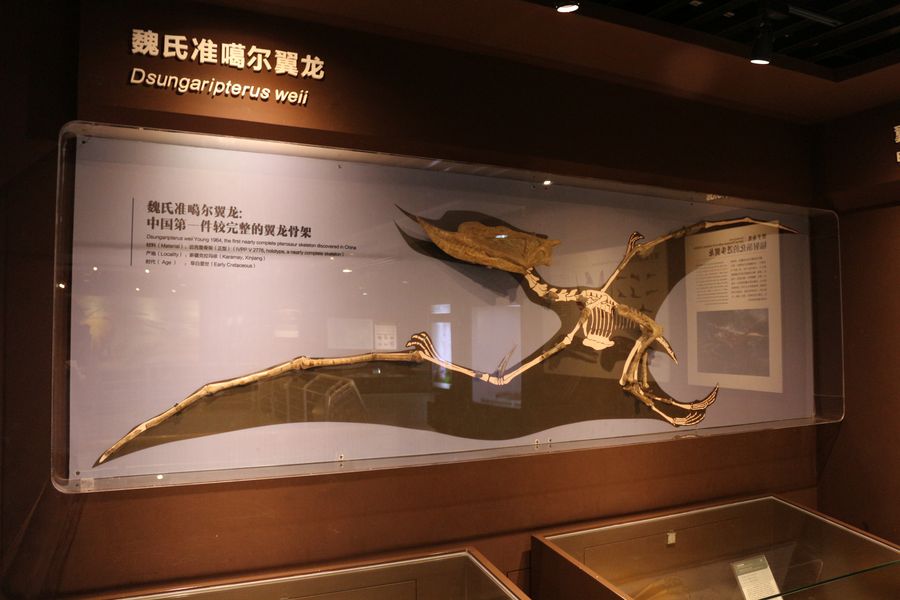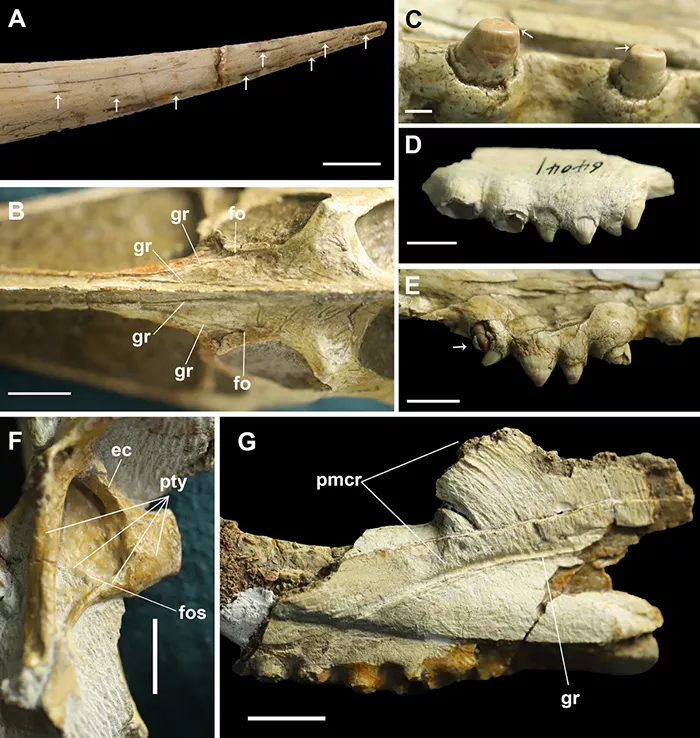Xinhua:Chinese scientists report new findings on unique pterosaur fossil

The fossilized skeleton of the first complete pterosaur skeleton discovered in China is on exhibition at the Paleozoological Museum of China in Beijing. (Photo provided by the Institute of Vertebrate Paleontology and Paleoanthropology of the Chinese Academy of Sciences)
Pterosaurs are the first vertebrates to achieve powered flight. They have four extremely elongated phalanges of the ring finger to support their membranes when flying.
BEIJING, April 8 (Xinhua) -- New research on the first complete pterosaur skeleton discovered in China provides more information on pterosaur phylogeny and sheds light on their living habit during the Cretaceous period more than 100 million years ago.
Dsungaripterus weii, discovered in Wuerhe region in northwest China's Xinjiang Uygur Autonomous Region and made public in 1964, is the first fossilized pterosaur with a nearly complete skeleton found in China.
Compared with other pterosaurs, it has some unique characters on the upper and lower jaws, such as toothless anterior tip tapering anteriorly, bulbous teeth with a broad and oval base and thick bone walls, said the researchers.
A research team from the Institute of Vertebrate Paleontology and Paleoanthropology of the Chinese Academy of Sciences has found a large number of Cretaceous terrestrial vertebrate fossils including pterosaurs, dinosaurs, plesiosaurs, crocodiles and turtles in the region.

Combo photo of the fossils of Dsungaripterus weii, the first fossilized pterosaur with a nearly complete skeleton found in China. (Photo provided by the Institute of Vertebrate Paleontology and Paleoanthropology of the Chinese Academy of Sciences)
Over the past 10 years, a new team led by Wang Xiaolin has explored the Mesozoic strata in and around Wuerhe and excavated abundant fossils of pterosaurs, dinosaurs and their footprints. These fossils increased the diversity of this fauna and provided important materials to further studies.
Pterosaurs are the first vertebrates to achieve powered flight. They have four extremely elongated phalanges of the ring finger to support their membranes when flying.
Generally, the bone walls in pterosaurs are thin, which allows them to fly but makes them difficult to preserve. Many pterosaur fossils are almost flattened when preserved. However, the skull of Dsungaripterus is nearly complete and tri-dimensionally preserved, providing the possibility to study its palatal region, said the researchers.
Through careful observation under a microscope, scientists focused on a pair of bones with a unique shape, called pterygoids, in the palatal region.
They also studied the upper and lower jaws of Dsungaripterus and found that its teeth are blunt, and some teeth have attrition surfaces on top. It seems that the blunt teeth were used for cracking hard shells, providing further support to the hypothesis that Dsungaripterus feed on shellfish.
The study was recently published in the journal PeerJ.
Download attachments: